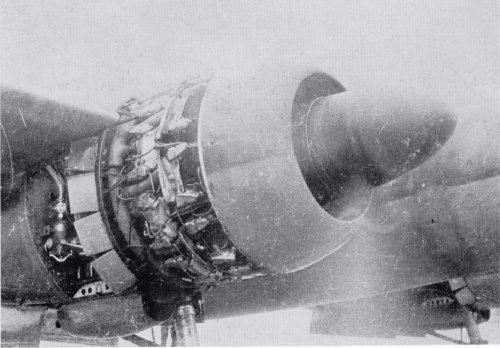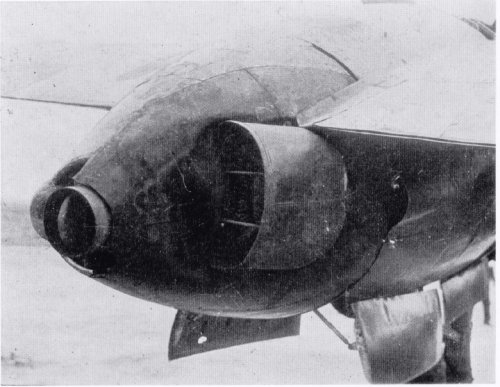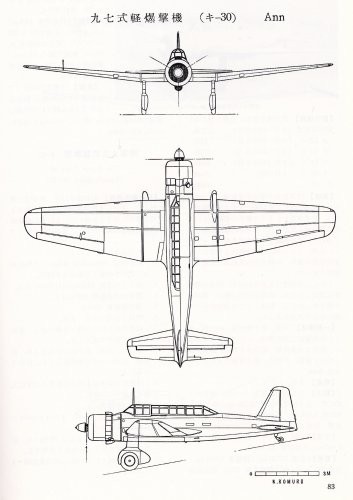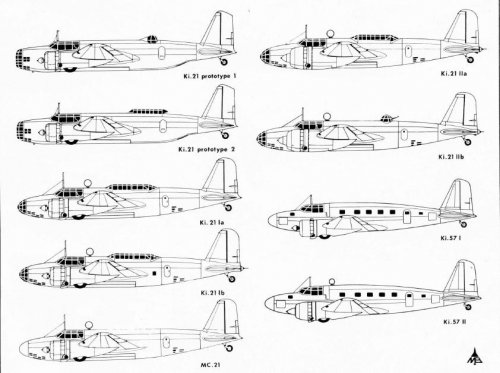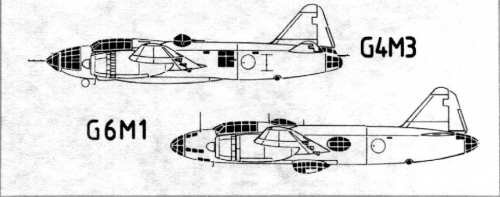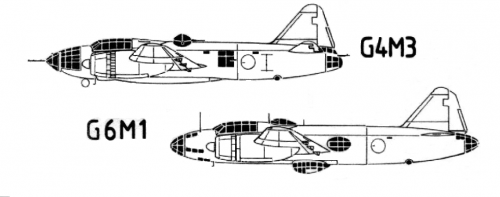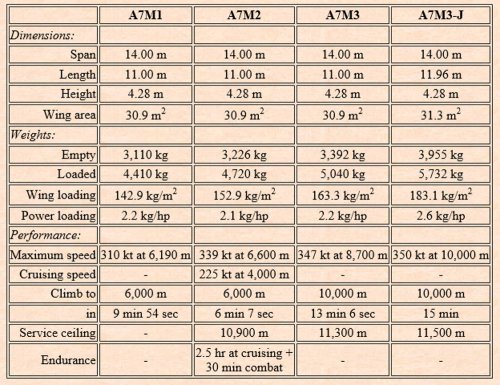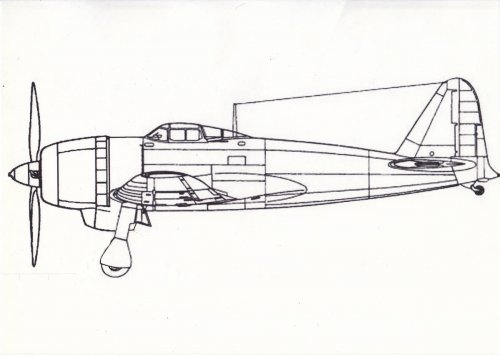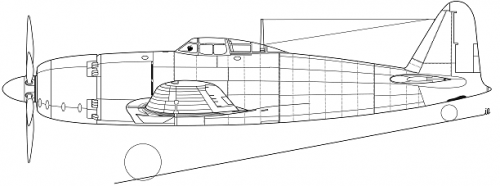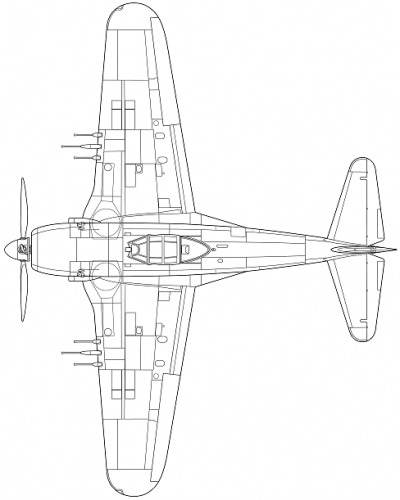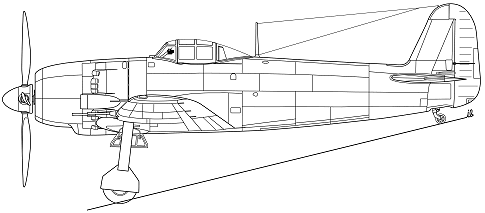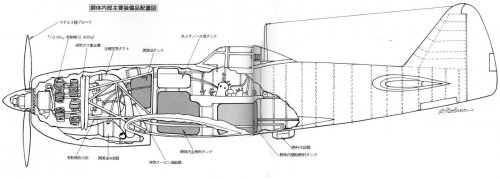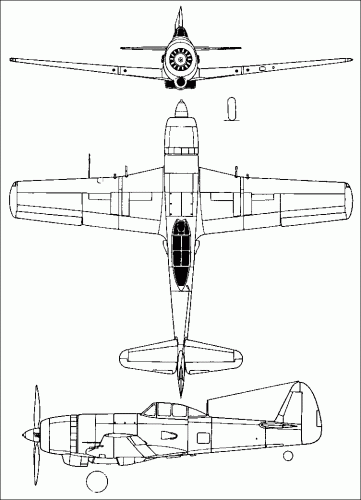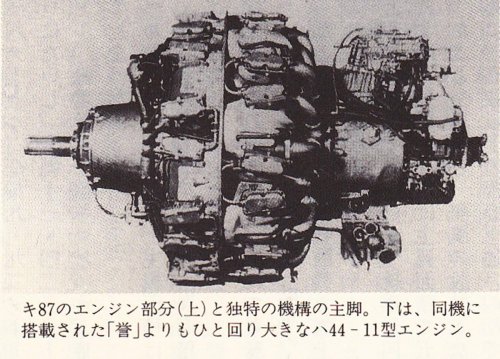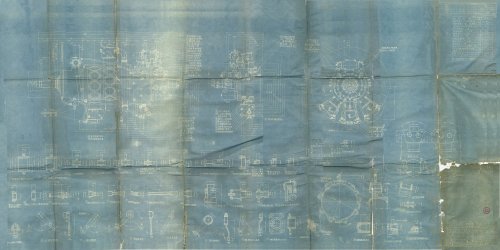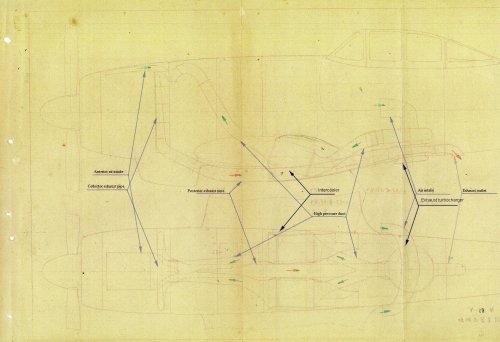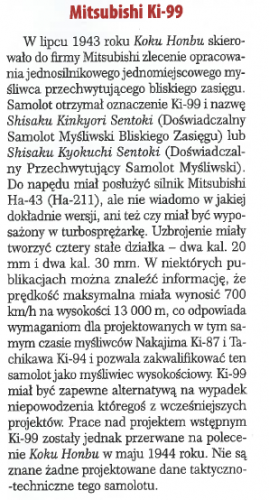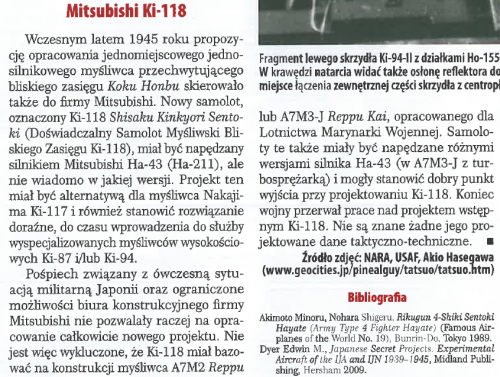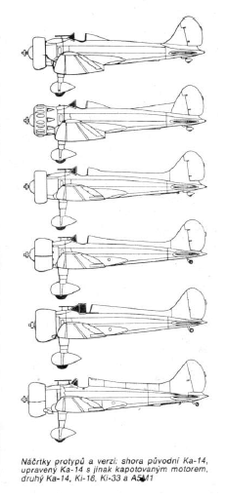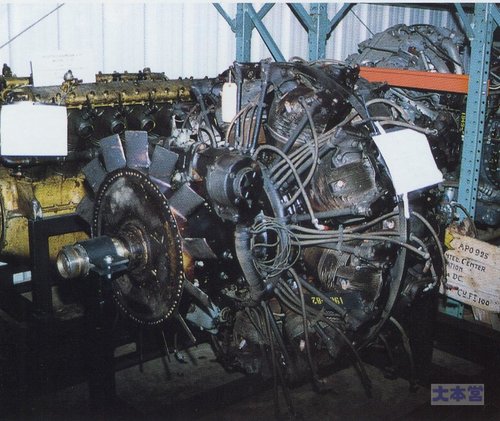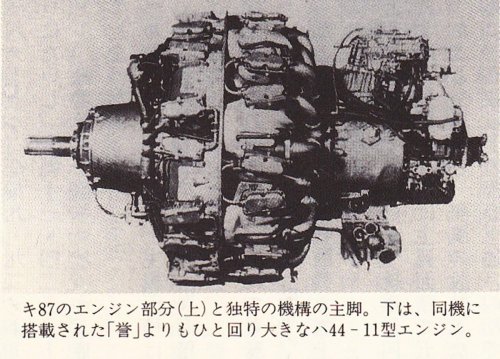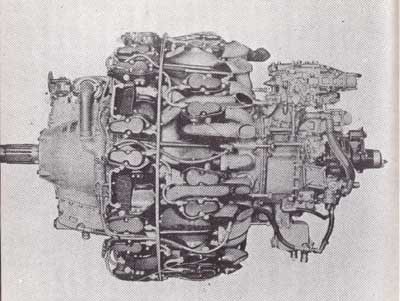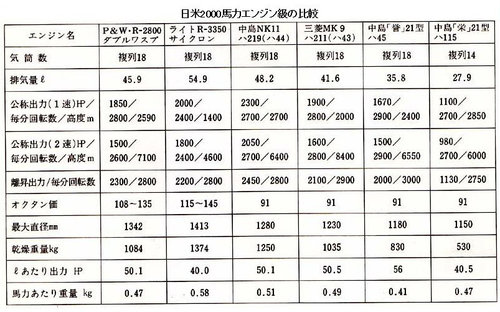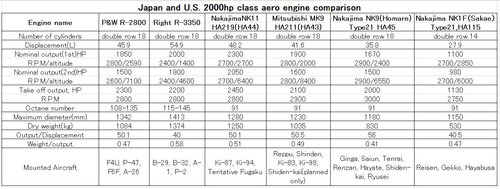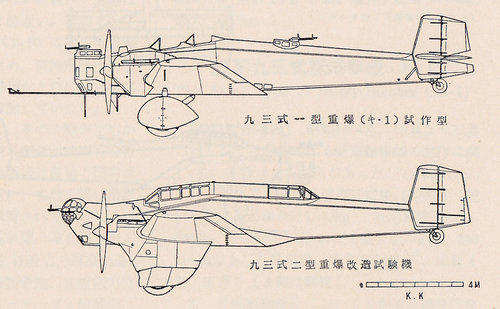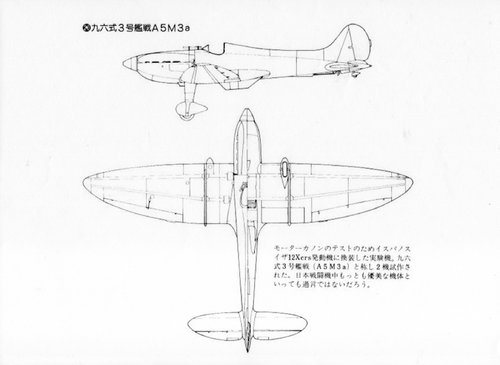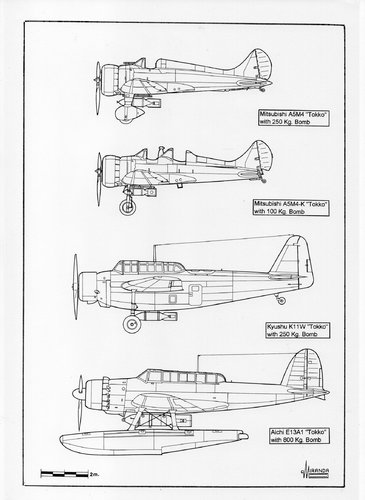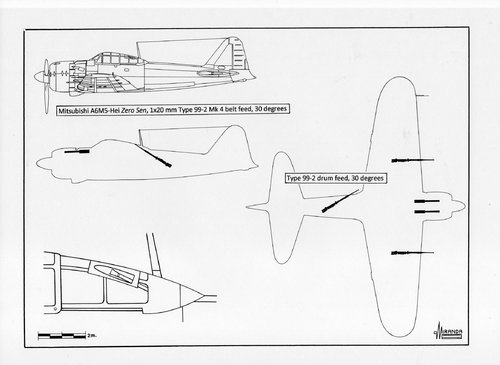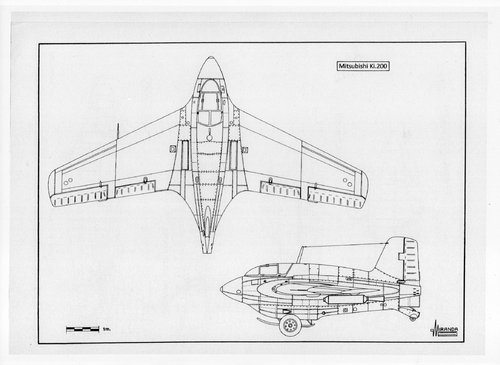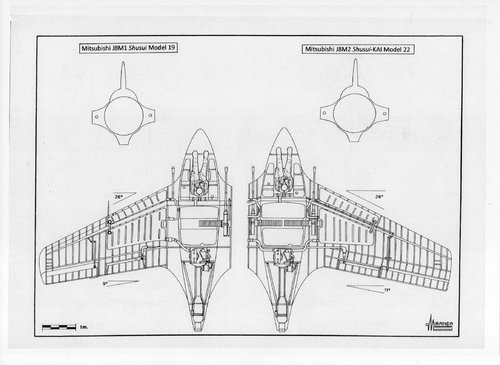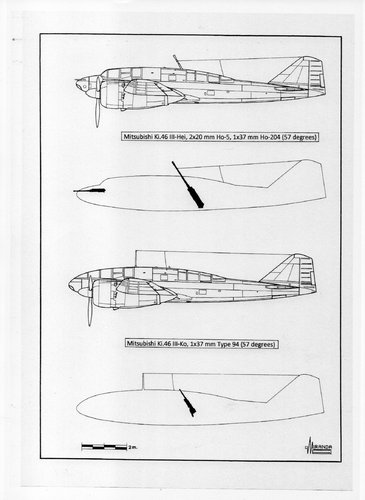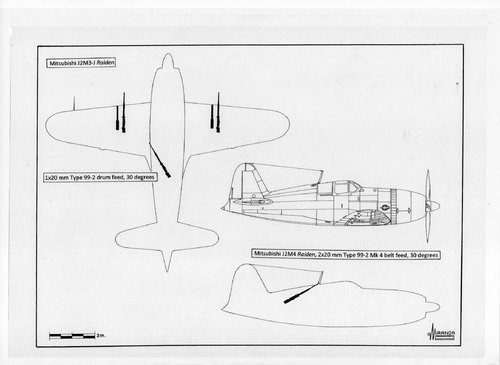You are using an out of date browser. It may not display this or other websites correctly.
You should upgrade or use an alternative browser.
You should upgrade or use an alternative browser.
Re: Various Mitsubishi projects and prototypes
- Thread starter airman
- Start date
blackkite
Don't laugh, don't cry, don't even curse, but.....
- Joined
- 31 May 2007
- Messages
- 8,819
- Reaction score
- 7,716
I believe that there were no official drawings for 4 engined G6M.
Honjo explained the idea to IJN with drawings on the blackboard, but IJN immediately rejected and forced Honjo to erase the idea.
If Honjo had official drawings,he could use them for explanation to IJN.
If I was there, I took the drawings on the blackboard with my cell phone and post. ;D
Honjo explained the idea to IJN with drawings on the blackboard, but IJN immediately rejected and forced Honjo to erase the idea.
If Honjo had official drawings,he could use them for explanation to IJN.
If I was there, I took the drawings on the blackboard with my cell phone and post. ;D
- Joined
- 8 March 2009
- Messages
- 1,056
- Reaction score
- 1,298
A6M8
There were two prototypes built, the photo is of the one captured by the Americans. As far as I know its the only photo in existence, but I'd love to be proven wrong.
I have a few more, but uninteresting diagrams of the cowling if anyone expresses interest.




There were two prototypes built, the photo is of the one captured by the Americans. As far as I know its the only photo in existence, but I'd love to be proven wrong.
I have a few more, but uninteresting diagrams of the cowling if anyone expresses interest.




blackkite
Don't laugh, don't cry, don't even curse, but.....
- Joined
- 31 May 2007
- Messages
- 8,819
- Reaction score
- 7,716
Many thanks for very rare A6M8's drawings!
It's engine was Kinsei(金星,planet Venus), air cooling double radial 16 cylinder, 32.34L, 1,500HP in take off.
A6M8's top speed was 572km/h.
The Spinner was Suisei(彗星)'s one.
It's engine was Kinsei(金星,planet Venus), air cooling double radial 16 cylinder, 32.34L, 1,500HP in take off.
A6M8's top speed was 572km/h.
The Spinner was Suisei(彗星)'s one.
Winston
ACCESS: Confidential
- Joined
- 29 December 2010
- Messages
- 127
- Reaction score
- 34
It's a common photo so I will look through some books to see if any of them give a source. 
Here is the daily 'bump' Ki-83 engine details.
Ki-83 engine details.
Source. Famous Airplanes of the World No.94, Japanese Army Experimental Fighters Part 2. Feb. 1978.
Here is the daily 'bump'
Source. Famous Airplanes of the World No.94, Japanese Army Experimental Fighters Part 2. Feb. 1978.
Attachments
blackkite
Don't laugh, don't cry, don't even curse, but.....
- Joined
- 31 May 2007
- Messages
- 8,819
- Reaction score
- 7,716
Hi!
Mitsubishi Ki-30 Ann 3 side view. It's hard to find this drawing in the net.
https://www.google.com/search?um=1&hl=ja&tbm=isch&q=%E4%B8%89%E8%8F%B1+Ki-30+Ann&spell=1&sa=X&ei=HBxKUur2DMnkiAeHjYDgDw&ved=0CE8QBSgA#hl=ja&q=%E4%B8%89%E8%8F%B1+Ki-30+Ann&tbm=isch&um=1
Mitsubishi Ki-30 Ann 3 side view. It's hard to find this drawing in the net.
https://www.google.com/search?um=1&hl=ja&tbm=isch&q=%E4%B8%89%E8%8F%B1+Ki-30+Ann&spell=1&sa=X&ei=HBxKUur2DMnkiAeHjYDgDw&ved=0CE8QBSgA#hl=ja&q=%E4%B8%89%E8%8F%B1+Ki-30+Ann&tbm=isch&um=1
Attachments
theponja
ACCESS: Secret
- Joined
- 5 September 2007
- Messages
- 429
- Reaction score
- 41
blackkite said:Hi!
Mitsubishi Ki-30 Ann 3 side view. It's hard to find this drawing in the net.
https://www.google.com/search?um=1&hl=ja&tbm=isch&q=%E4%B8%89%E8%8F%B1+Ki-30+Ann&spell=1&sa=X&ei=HBxKUur2DMnkiAeHjYDgDw&ved=0CE8QBSgA#hl=ja&q=%E4%B8%89%E8%8F%B1+Ki-30+Ann&tbm=isch&um=1
Really! Thanks a lot for the big resolution 3d view blackkite!!!
Pelzig
ACCESS: Secret
- Joined
- 23 October 2008
- Messages
- 448
- Reaction score
- 82
Indeed, the Ki-90 is in the second Japanese Secret Projects book. ;D
airman said:http://arawasi-wildeagles.blogspot.it/2012/11/mitsubishi-ki-90.html
i hope you have more about this also on next book of japanese aircraft projects !!
windswords
ACCESS: Secret
- Joined
- 19 May 2009
- Messages
- 389
- Reaction score
- 217
Winston
ACCESS: Confidential
- Joined
- 29 December 2010
- Messages
- 127
- Reaction score
- 34
hesham said:Hi,
I know the Ki series from J-aircraft site,but the little known
is the engines and the number of seat to each project.
The Ki-112 was twin engined four seat heavy escort fighter project developed from Ki-67 bomber.
For sake of completeness:
"The Mitsubishi Ki-112 was a design project for a heavily armed fighter based on the [/size]Ki-67 Hiryu (Tony)[/size]. Work began on the project in October 1944, and ended in the summer of 1945 before any aircraft had been built, and thus before the final details of the design had set down. It was probably a wooden version of the Ki-67, armed with eight 12.7mm Type 1 machine guns and a single 20mm cannon, and may have been designed to protect the Ki-67-I two-seat Sakura-Dan suicidal attack aircraft."
From: http://www.historyofwar.org/articles/weapons_mitsubishi_ki-112.html
blackkite
Don't laugh, don't cry, don't even curse, but.....
- Joined
- 31 May 2007
- Messages
- 8,819
- Reaction score
- 7,716
The duty of Ki-112 was the attack to an enemy airfield institution, a terrestrial airplane, an important place, and an enemy vessel.
It seems that Mitsubishi had started basic research in 1944 in the early summer although it was not clear in trial production directions of Ki-112 whether it was taken out at which time.
At the beginning, as an engine of Ki-112, Mitsubishi HA214(HA42)Vulkan coupling drive 2 stage supercharged engine was selected, and the design was advanced.
Changing the engine of Ki-112 into a Ha 214 turbocharged engine from Ministry of Supply to Mitsubishi in October, 1944 was directed.
Change of an engine was difficult, and when Mitsubishi wanted to advance a design with the engine of a schedule at the beginning, it offered it to Ministry of Supply.
The trial production work of Ki-112 stagnated and was stopped at this time after all.
It seems that Mitsubishi had started basic research in 1944 in the early summer although it was not clear in trial production directions of Ki-112 whether it was taken out at which time.
At the beginning, as an engine of Ki-112, Mitsubishi HA214(HA42)Vulkan coupling drive 2 stage supercharged engine was selected, and the design was advanced.
Changing the engine of Ki-112 into a Ha 214 turbocharged engine from Ministry of Supply to Mitsubishi in October, 1944 was directed.
Change of an engine was difficult, and when Mitsubishi wanted to advance a design with the engine of a schedule at the beginning, it offered it to Ministry of Supply.
The trial production work of Ki-112 stagnated and was stopped at this time after all.
- Joined
- 26 May 2006
- Messages
- 34,895
- Reaction score
- 15,759
hesham said:About the Mitsubishi A8M1 Rikufu for 20-Shi,it was a really project
to Japanese navy,
Unfortunately,no drawings survivor to A8M Rikufu project,only some info;
http://pl.wikipedia.org/wiki/Mitsubishi/Nakajima_A8M
blackkite
Don't laugh, don't cry, don't even curse, but.....
- Joined
- 31 May 2007
- Messages
- 8,819
- Reaction score
- 7,716
Please try google or other translater.
http://www.geocities.co.jp/Bookend-Ohgai/3853/jnrs/jnrsC314.htm
戦闘機「陸風, (Rikufu)」
烈風の系列には「烈風」「烈風性能向上型」のほか、排気タービン付き
高々度局地戦闘機型の「烈風改」(A7M3-J)があるが、この「烈風改」を
再び艦上機型に改造したものが計画され、これが「陸風」と呼ばれる予定
であったと云われ、また二十試甲戦と同一とも云われる
Fighter plane "land breeze"
Although there is "Reppu-kai" (A7M3-J) of a high altitude interceptor type with an turbo charger besides a "Reppu" and a "Performance increased type Reppu" in the series of a Reppu, What converted this "Reppu-kai" into the carrier fighter type again is planned, and that this was due to be called the "land breeze" is said, and it is said that it is also the same as that of a 20 shi ko fighter.
http://www.geocities.co.jp/Bookend-Ohgai/3853/jnrs/jnrsC314.htm
戦闘機「陸風, (Rikufu)」
烈風の系列には「烈風」「烈風性能向上型」のほか、排気タービン付き
高々度局地戦闘機型の「烈風改」(A7M3-J)があるが、この「烈風改」を
再び艦上機型に改造したものが計画され、これが「陸風」と呼ばれる予定
であったと云われ、また二十試甲戦と同一とも云われる
Fighter plane "land breeze"
Although there is "Reppu-kai" (A7M3-J) of a high altitude interceptor type with an turbo charger besides a "Reppu" and a "Performance increased type Reppu" in the series of a Reppu, What converted this "Reppu-kai" into the carrier fighter type again is planned, and that this was due to be called the "land breeze" is said, and it is said that it is also the same as that of a 20 shi ko fighter.
blackkite
Don't laugh, don't cry, don't even curse, but.....
- Joined
- 31 May 2007
- Messages
- 8,819
- Reaction score
- 7,716
blackkite
Don't laugh, don't cry, don't even curse, but.....
- Joined
- 31 May 2007
- Messages
- 8,819
- Reaction score
- 7,716
Perhaps this aircraft is Reppu with Nakajima Ha-44 engine, so called 20-shi ko fighter (official name : next fighter) mitsubishi proposal.
There is a opinion that name of this aircraft was planned to be Rikufu(陸風,Land breeze).
Apparently Rifuku is a mistake.
https://ja.wikipedia.org/wiki/%E4%BA%8C%E5%8D%81%E8%A9%A6%E7%94%B2%E6%88%A6%E9%97%98%E6%A9%9F
This drawing is my poor image for Mitsubishi so called 20-shi ko fighter(official name : next fighter). Propeller diameter is 4.0m.(Reppu propeller diameter is 3.6m).
There is a opinion that name of this aircraft was planned to be Rikufu(陸風,Land breeze).
Apparently Rifuku is a mistake.
https://ja.wikipedia.org/wiki/%E4%BA%8C%E5%8D%81%E8%A9%A6%E7%94%B2%E6%88%A6%E9%97%98%E6%A9%9F
This drawing is my poor image for Mitsubishi so called 20-shi ko fighter(official name : next fighter). Propeller diameter is 4.0m.(Reppu propeller diameter is 3.6m).
Attachments
blackkite
Don't laugh, don't cry, don't even curse, but.....
- Joined
- 31 May 2007
- Messages
- 8,819
- Reaction score
- 7,716
https://ja.wikipedia.org/wiki/%E4%BA%8C%E5%8D%81%E8%A9%A6%E7%94%B2%E6%88%A6%E9%97%98%E6%A9%9F
Semi auto translation. ;D
"20-shi Ko fighter was the fighter that the IJA planned.
There is a possibility that the name “20-shi Ko fighter” isn't formal, but this is the name which is widely used up to now.
The IJA considered "high altitude Ko fighter" as a plan policy of a new fighter and made public in each manufacturer by a joint session of officials and the aircraft makers in 1945 May 1.
I this session, following three designs were discussed.
(1) Modified version of Reppu or Shiden-kai.
(2) Jinpu.
(3) New design.
Then selected Reppu engine exchange type and Shidei-kai engine exchange type as "decisive battle fighter".
And decided to develop new plan “next fighter”. Later this next fighter became “20-shi Ko fighter”.
Mitsubishi "HA 43-51", Nakajima "HA 44-21" and Nakajima "HA 45-44" engine were designated as an engine of "the next fighter". The following target value had been submitted from Yokosuka navy flying corps.
* Maximum velocity : 704 km/h ( 10,000 m),landing speed, below 148 km/h.
* Time to reach 10,000 m : Within 15 minutes. Service ceiling : 13,500 m.
* Endurance : cruises, 2.5 hours + full power 0.7 hours.
* Armament : four 20mm cannon (250 bullets) .
* Fuselage fuel tank : Rubber shellproof.
*Equipped with automatic extinguish device in a wing.
*Have defense.behind the pilot, magazine upper surface and back surface .
Mitsubishi Heavy Industries, Kawanishi and the first arsenal of munitions ( which Nakajima Aircraft changed to this name. Below called as "Nakajima") have submitted the performance estimation value in joint session of officials and the aircraft makers in May 23 1945 according to this request.
Mitsubishi submitted three kinds of plans for which Reppu performance improvement type, Reppu-kai modification type and perfect new design plans.
Kawanishi submitted the plan which Shiden-kai modification type, and Nakajima perhaps submitted the plan which Ki 87 modification type or Tachikawa Ki 94II base design..
An improvement plan of Reppu-kai was selected as "the next fighter" from these plans , and decided to develop this fighter by Mitsubishi and Nakajima joint work, because expected install "HA 44-21" engine was Nakajima’s design.
This fighter was 20-shi Ko fighter. In June 10 1945, required performance was decided.
After that “HA 44-13"engine which had high achievement possibility was added as the candidate for alternate engine.
The IJA expected that the operational date of 20-shi Ko fighter was beginning in 1947, but development was canceled at the plan stage with the end of the war.
20-shi Ko fighter was the IJA planned last fighter.
Final 20-shi Ko fighter plan was based on Reppu-kai or Reppu type 11, all data except payload were near target value.20-shi Ko fighter difference compared with Reppu were engine”Ha44-21” and larger weight propeller.
The cruising range, the armament and the shellproof etc. are equal to the Reppu performance improvement type.
An automatic air combat flap was planning to be improved to secure the air combat performance in the high altitude.
20-shi Ko-fighter specification (the planned value)
Span : 14M, Wing area : 31.3 m2, Empty weight : :3,392 kg, Gross weight : :5,753 kg, Engine : Nakajima HA 44-21 18 cylinders of air-cooled radial (2200 horsepower)x 1, Maximum speed : :657 km/h, Cruising speed : :417 km/h, Service seiling : :10,500 m, Endurance : cruise for 2.5 hours+ full speed for 0.6 hours, * Armament : four type-99 20-go 5-gata 20mm cannon.
It was written on joint work "zero fighter" of Jiro Horikoshi and Okuyama MasatakerShobu, but there were no names as "20-shi Ko fighter" in official documents in those days, and after beginning to plan, the name as "next fighter" was called.
It was said that a nickname as "land breeze" was scheduled."
Ko-fighter(甲戦闘機) : Air superiority fighter, single seater.(A real fighter.)
Otsu-fighter(乙戦闘機) : High altitude interceptor, single seater.
Hei-fighter(丙戦闘機) : Night interceptor, twin seater.
Speculative Kawanishi plan.
http://www.warbirds.jp/kakuki/kaksasie/hon/N1K2-J2.html
HA44-21 ENGINE : two stage three speed mechanical supercharged engine.
Semi auto translation. ;D
"20-shi Ko fighter was the fighter that the IJA planned.
There is a possibility that the name “20-shi Ko fighter” isn't formal, but this is the name which is widely used up to now.
The IJA considered "high altitude Ko fighter" as a plan policy of a new fighter and made public in each manufacturer by a joint session of officials and the aircraft makers in 1945 May 1.
I this session, following three designs were discussed.
(1) Modified version of Reppu or Shiden-kai.
(2) Jinpu.
(3) New design.
Then selected Reppu engine exchange type and Shidei-kai engine exchange type as "decisive battle fighter".
And decided to develop new plan “next fighter”. Later this next fighter became “20-shi Ko fighter”.
Mitsubishi "HA 43-51", Nakajima "HA 44-21" and Nakajima "HA 45-44" engine were designated as an engine of "the next fighter". The following target value had been submitted from Yokosuka navy flying corps.
* Maximum velocity : 704 km/h ( 10,000 m),landing speed, below 148 km/h.
* Time to reach 10,000 m : Within 15 minutes. Service ceiling : 13,500 m.
* Endurance : cruises, 2.5 hours + full power 0.7 hours.
* Armament : four 20mm cannon (250 bullets) .
* Fuselage fuel tank : Rubber shellproof.
*Equipped with automatic extinguish device in a wing.
*Have defense.behind the pilot, magazine upper surface and back surface .
Mitsubishi Heavy Industries, Kawanishi and the first arsenal of munitions ( which Nakajima Aircraft changed to this name. Below called as "Nakajima") have submitted the performance estimation value in joint session of officials and the aircraft makers in May 23 1945 according to this request.
Mitsubishi submitted three kinds of plans for which Reppu performance improvement type, Reppu-kai modification type and perfect new design plans.
Kawanishi submitted the plan which Shiden-kai modification type, and Nakajima perhaps submitted the plan which Ki 87 modification type or Tachikawa Ki 94II base design..
An improvement plan of Reppu-kai was selected as "the next fighter" from these plans , and decided to develop this fighter by Mitsubishi and Nakajima joint work, because expected install "HA 44-21" engine was Nakajima’s design.
This fighter was 20-shi Ko fighter. In June 10 1945, required performance was decided.
After that “HA 44-13"engine which had high achievement possibility was added as the candidate for alternate engine.
The IJA expected that the operational date of 20-shi Ko fighter was beginning in 1947, but development was canceled at the plan stage with the end of the war.
20-shi Ko fighter was the IJA planned last fighter.
Final 20-shi Ko fighter plan was based on Reppu-kai or Reppu type 11, all data except payload were near target value.20-shi Ko fighter difference compared with Reppu were engine”Ha44-21” and larger weight propeller.
The cruising range, the armament and the shellproof etc. are equal to the Reppu performance improvement type.
An automatic air combat flap was planning to be improved to secure the air combat performance in the high altitude.
20-shi Ko-fighter specification (the planned value)
Span : 14M, Wing area : 31.3 m2, Empty weight : :3,392 kg, Gross weight : :5,753 kg, Engine : Nakajima HA 44-21 18 cylinders of air-cooled radial (2200 horsepower)x 1, Maximum speed : :657 km/h, Cruising speed : :417 km/h, Service seiling : :10,500 m, Endurance : cruise for 2.5 hours+ full speed for 0.6 hours, * Armament : four type-99 20-go 5-gata 20mm cannon.
It was written on joint work "zero fighter" of Jiro Horikoshi and Okuyama MasatakerShobu, but there were no names as "20-shi Ko fighter" in official documents in those days, and after beginning to plan, the name as "next fighter" was called.
It was said that a nickname as "land breeze" was scheduled."
Ko-fighter(甲戦闘機) : Air superiority fighter, single seater.(A real fighter.)
Otsu-fighter(乙戦闘機) : High altitude interceptor, single seater.
Hei-fighter(丙戦闘機) : Night interceptor, twin seater.
Speculative Kawanishi plan.
http://www.warbirds.jp/kakuki/kaksasie/hon/N1K2-J2.html
HA44-21 ENGINE : two stage three speed mechanical supercharged engine.
Attachments
blackkite
Don't laugh, don't cry, don't even curse, but.....
- Joined
- 31 May 2007
- Messages
- 8,819
- Reaction score
- 7,716
Example of Nakajima Ha-44 engine with turbo charger.
Ha-44-21 engine did not have turbocharger.
Ha-44-21 engine did not have turbocharger.
Attachments
- Joined
- 26 May 2006
- Messages
- 34,895
- Reaction score
- 15,759
hesham said:Militaria XX wieku 2012-05
From the same source,a more Info about Mitsubishi Ki-118.
Attachments
Info by polish Militaria XX about Mitsubishi Ki-99 : " In July 1943, Koku Honbu directed Mitsubishoclet to develop a single-engine single-seat
short-range interceptor plum.
The plane was given the name Ki-99i
Shisaku Kinkyon 'Sentoki (Experimental
Fighter Plane) or
Shisaku Kyokuchi ', Sentoki (Experimental Hunting Fighter Plane).
The engine was to be used by the Mitsubishi engine
Ha-43 (Ha-211), but not known
the exact version, or whether it was to be equipped with a turbocharger. They had weapons
create four permanent parcels - two cal. 20
mm and two cal. 30 mm. In some publications you can find information that
the maximum speed was to be 700
km / h at 13,000 m, which is equivalent
requirements designed for the same timekeepers NakajimaKi-87i TachikawaKi-94i allows you to quit
the plane was a high plane. Ki-99
it was supposed to be an alternative in case
failure of one of the previous ones
projects. Work on the preliminary project
Ki-99, however, was discontinued at the request of KokuHonbu in May 1944. Are not
known non-designed tactical data-
-technical of this aircraft " . Ki-99 seems be an unfinished project .
short-range interceptor plum.
The plane was given the name Ki-99i
Shisaku Kinkyon 'Sentoki (Experimental
Fighter Plane) or
Shisaku Kyokuchi ', Sentoki (Experimental Hunting Fighter Plane).
The engine was to be used by the Mitsubishi engine
Ha-43 (Ha-211), but not known
the exact version, or whether it was to be equipped with a turbocharger. They had weapons
create four permanent parcels - two cal. 20
mm and two cal. 30 mm. In some publications you can find information that
the maximum speed was to be 700
km / h at 13,000 m, which is equivalent
requirements designed for the same timekeepers NakajimaKi-87i TachikawaKi-94i allows you to quit
the plane was a high plane. Ki-99
it was supposed to be an alternative in case
failure of one of the previous ones
projects. Work on the preliminary project
Ki-99, however, was discontinued at the request of KokuHonbu in May 1944. Are not
known non-designed tactical data-
-technical of this aircraft " . Ki-99 seems be an unfinished project .
For Mitsubishi Ki-118 "
"In the early summer of 1945, the proposal to develop a single-seater single-engine interceptor fighter
Koka Honbu's close range has been directed
also to Mitsubishi. A new plane,
marked Ki-118 ShisakuKinkyori Santoki (Experimental Fighter Plane Short Range Ki-l18), was supposed to be driven
Mitsubishi Ha-43 engine (Ha-211), but
it is not known in which version. This project
was supposed to be an alternative to the Nakajima Ki-117 fighter and also be a solution
temporary, pending entry into service
specialized height planers Ki-87 and / or Ki-94.
Urgency related to the then military situation of Japan and limited
the possibilities of a design office iirma
Mitsubishi did not allow the development of a completely new project. No
it is therefore possible that Ki-118 would be based on the construction of the A7M2 Reppu fighter.
ub A7M3-J Rappa Kai, developed for
Naval Aviation. These planes were also supposed to be driven by different ones
versions of the Ha-43 engine (in A7M3-J with turbocharger) and could be a good point
exit to design the Ki-118. End
war interrupted the preliminary project Ki-118. There are no known tactical and technical data for it."
Mitsubishi Ki-118 seems be a variant of Reppu for Army . "
"In the early summer of 1945, the proposal to develop a single-seater single-engine interceptor fighter
Koka Honbu's close range has been directed
also to Mitsubishi. A new plane,
marked Ki-118 ShisakuKinkyori Santoki (Experimental Fighter Plane Short Range Ki-l18), was supposed to be driven
Mitsubishi Ha-43 engine (Ha-211), but
it is not known in which version. This project
was supposed to be an alternative to the Nakajima Ki-117 fighter and also be a solution
temporary, pending entry into service
specialized height planers Ki-87 and / or Ki-94.
Urgency related to the then military situation of Japan and limited
the possibilities of a design office iirma
Mitsubishi did not allow the development of a completely new project. No
it is therefore possible that Ki-118 would be based on the construction of the A7M2 Reppu fighter.
ub A7M3-J Rappa Kai, developed for
Naval Aviation. These planes were also supposed to be driven by different ones
versions of the Ha-43 engine (in A7M3-J with turbocharger) and could be a good point
exit to design the Ki-118. End
war interrupted the preliminary project Ki-118. There are no known tactical and technical data for it."
Mitsubishi Ki-118 seems be a variant of Reppu for Army . "
blackkite
Don't laugh, don't cry, don't even curse, but.....
- Joined
- 31 May 2007
- Messages
- 8,819
- Reaction score
- 7,716
HA44 was NK11A. Different from Mitsubishi MK9A(HA-43).Could be Nakajima HA 44-21 18 cylinders of air-cooled radial (2200 horsepower) a licenced version by Nakajima of Mk9A ? Kawanishi Shi-20 reminds me the Kawanishi N1K-5J .
M means Mitsubishi.
Nakajima Homare is NK9A(HA-45).
Attachments
Last edited:
blackkite
Don't laugh, don't cry, don't even curse, but.....
- Joined
- 31 May 2007
- Messages
- 8,819
- Reaction score
- 7,716
What a detailed informations!! I can't follow.For Mitsubishi Ki-118 "
"In the early summer of 1945, the proposal to develop a single-seater single-engine interceptor fighter
Koka Honbu's close range has been directed
also to Mitsubishi. A new plane,
marked Ki-118 ShisakuKinkyori Santoki (Experimental Fighter Plane Short Range Ki-l18), was supposed to be driven
Mitsubishi Ha-43 engine (Ha-211), but
it is not known in which version. This project
was supposed to be an alternative to the Nakajima Ki-117 fighter and also be a solution
temporary, pending entry into service
specialized height planers Ki-87 and / or Ki-94.
Urgency related to the then military situation of Japan and limited
the possibilities of a design office iirma
Mitsubishi did not allow the development of a completely new project. No
it is therefore possible that Ki-118 would be based on the construction of the A7M2 Reppu fighter.
ub A7M3-J Rappa Kai, developed for
Naval Aviation. These planes were also supposed to be driven by different ones
versions of the Ha-43 engine (in A7M3-J with turbocharger) and could be a good point
exit to design the Ki-118. End
war interrupted the preliminary project Ki-118. There are no known tactical and technical data for it."
Mitsubishi Ki-118 seems be a variant of Reppu for Army . "
windswords
ACCESS: Secret
- Joined
- 19 May 2009
- Messages
- 389
- Reaction score
- 217
Blackkite-san, It is good to hear from you again my friend.
blackkite
Don't laugh, don't cry, don't even curse, but.....
- Joined
- 31 May 2007
- Messages
- 8,819
- Reaction score
- 7,716
Thanks for your kind words my dear windswords-san.

Please enjoy Mitsubishi The Army Type 93 Heavy-Bomber(Ki-1) prototype and midified experimental aircraft side view.
Source ; ENCYCLOPEDIA OF JAPANESE AIRCRAFT VOL.1 MITSUBISHI'S AIRCRAFT CONTENTS
Another information.
Please enjoy Mitsubishi The Army Type 93 Heavy-Bomber(Ki-1) prototype and midified experimental aircraft side view.
Source ; ENCYCLOPEDIA OF JAPANESE AIRCRAFT VOL.1 MITSUBISHI'S AIRCRAFT CONTENTS
Another information.
Attachments
Last edited:
blackkite
Don't laugh, don't cry, don't even curse, but.....
- Joined
- 31 May 2007
- Messages
- 8,819
- Reaction score
- 7,716
Hi! Ki-46-Ⅳ production model that was not realized is as follows. Turbo charging system of this aircraft did not have intercoolers.
Ki-46-Ⅳ production model had stepped wind shield, while prototype had non stepped wind shield.
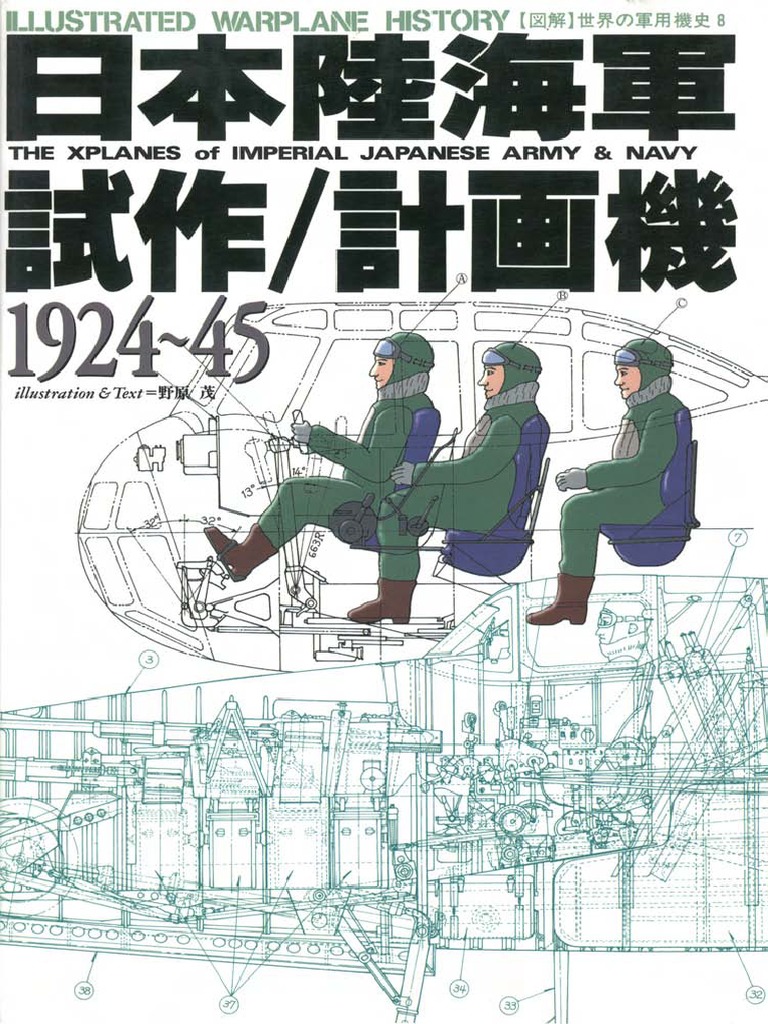
 www.scribd.com
www.scribd.com




Ki-46-Ⅳ production model had stepped wind shield, while prototype had non stepped wind shield.
X-Planes of Imperial Japanese Army & Navy | PDF
Illustrated Warplanes History of World War II.
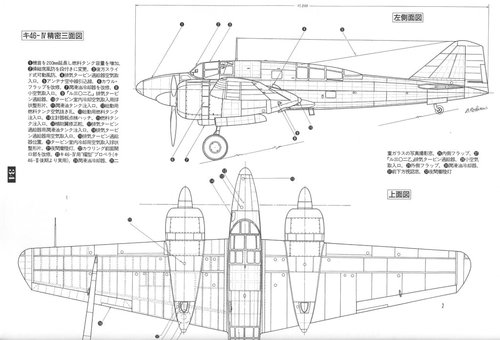
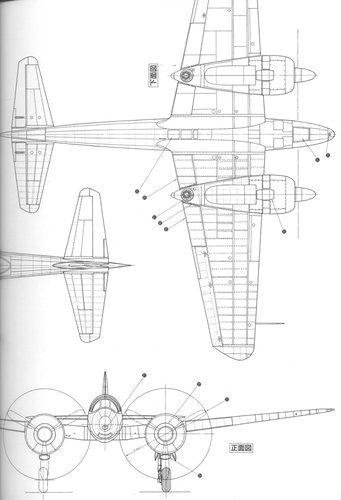
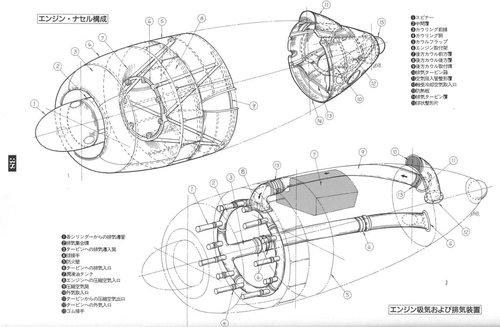
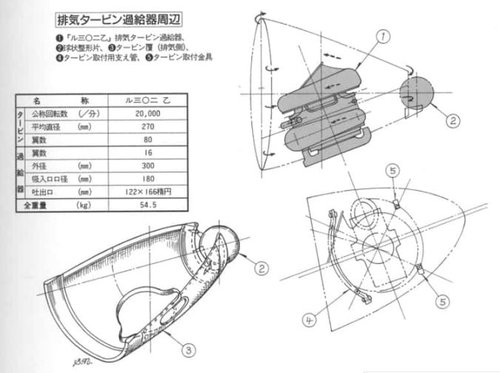
Last edited:
Similar threads
-
-
16 shi specifications for Zero replacement
- Started by Hardrada55
- Replies: 1
-
Yokosuka D4Y1/2 'Suisei", Projects & Variants
- Started by windswords
- Replies: 72
-
-
Hawker Typhoon Prototypes & Projects
- Started by Justo Miranda
- Replies: 5

